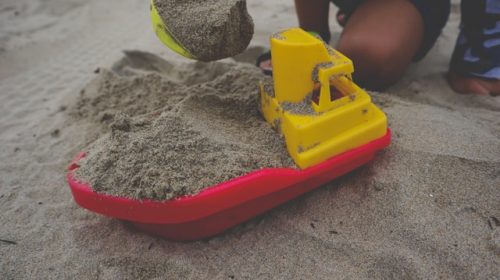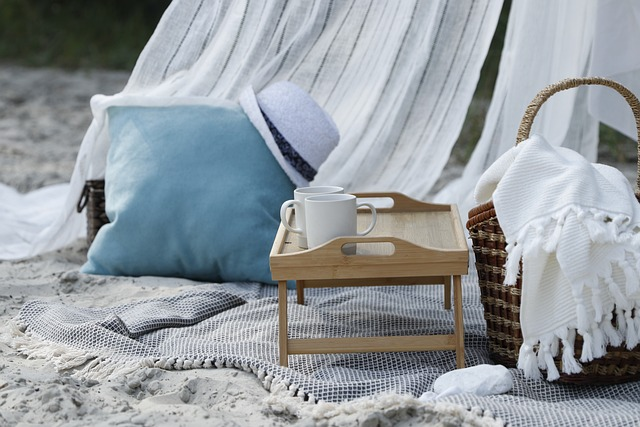Sand Tray Therapy
Does your kid enjoy playing in the sand? It can be a type of therapeutic sand therapy.

Source: unsplash.com
Do you want to learn about how sand is used in therapy? There are ways it can be used in therapy.
Having irrational worries about a serious illness is natural. However, if it becomes obsessive and disrupts your daily social function, you might be experiencing health anxiety, previously known as hypochondriasis or illness anxiety disorder. The condition can be associated with the person’s excessive exaggeration of the physical symptoms of the disease.
The person experiencing hypochondriasis might be overly concerned about the typical body sensations. The misinterpretation of body functions may result from different reasons. Some of the possible causes are extreme stress, anxiety disorders, and childhood trauma. It may also be rooted in other mental health issues, such as depression.
There are two categories of people with anxiety: care-seeking and care-avoidant. Care-seeking individuals tend to spend a lot of their time seeking medical advice. They tend to look for several treatments from multiple specialists. The latter avoid medical care because they don’t trust doctors to take their symptoms seriously.
Health anxiety commonly occurs in people in their early or middle adulthood. However, the children may also experience obsessive thoughts about their medical condition. Children, in particular, might express their emotions, their inner thoughts, and their negative feelings by playing with small toys and using the sand.
This sand tray therapy may be a helpful technique. Sand tray therapy is a therapeutic yet creative method using sand to release stress and express negative thoughts. During the sessions, sand tray therapy allows the participants to construct their situation and illustrate their present mood using the material. British pediatrician Margaret Lowenfeld developed this in 1921.
Sand tray therapy is a type of psychotherapy that is most commonly used with teens and adults. It is time-consuming. It may involve a tray filled with sand and acts from one’s life. The theory behind sand tray therapy is that it can be used as an example to help people understand their problems using common techniques.
This permits individuals to create their own ‘little world’ through various toys and different colors of the material. The situation created on the sand can be a reflection of the individual’s own life story and allows them to get rid of the challenges, resolve problems, and gain self-acceptance and confidence.
After studying psychodynamic psychology, Lowenfeld decided to utilize sand trays as a form of therapeutic technique. She focused on establishing sand tray and its integration into child psychotherapy in 1928.
Nowadays, there is an application of the humanistic strategy of this technique. The therapeutic approach focuses on the ability of the patients to find the answers or the solutions within themselves. Allowing them to realize their problems could facilitate healthy behavioral change freely. If the clients are having difficulties in expressing themselves vocally, they can substitute it for traditional therapy methods.
Interested in sand tray therapy and the benefits it can provide your family? We’ve listed some of the frequently asked questions on sand tray therapy below.
Sand Tray Therapy Works
According to peer-reviewed studies, sand tray therapy is a multidimensional form of expressive therapy that is used to treat a wide variety of psychological issues using a specific certification. Sand tray therapy is being practiced by international associations and international societies with different theoretical orientations and common techniques. The sand tray therapists or sand play therapists work with the client to create a tray that represents their current life situation and emotional states. In sand tray therapy, the client is then free to explore the tray and find solutions to their problems amid their limited responses.
A professional starts by providing a child with a sandbox. The box typically contains trays of toys, figurines, and miniature figures objects. The child is generally free to play around with the tray as the professional watches from the sidelines. They study the recurrent symbolism of the overall organization of the items on the material. As the treatment progresses, the professionals may add or remove the toys from the box. They may also introduce new recreational activities using the material.
What is Sand Tray Therapy?
Sand tray therapy is a mix of play and art therapy. Sand tray therapy uses world-building exercises. Sand tray therapy helps the child process their unpleasant or traumatic experience. The humanistic approach focuses on providing a safe or protected space for creative expression instead of psychotherapy, which involves in-depth discussions.
What is the difference between tray therapy and play therapy?
In today’s world, many people find that focusing on their health is of utmost importance. Although both approaches use the same material for therapeutic purposes, they have defining differences. In sand tray therapy, a strong client-provider relationship is critical to facilitate the treatment. The patient has to open up to the professional or therapist while the provider actively supports their recovery.
On the other hand, sandplay professionals and therapists do not interfere with the patient while in their play world. Play therapy can help individuals who are not as comfortable or capable of verbal expression.
Sand tray therapy is a type of mental health treatment that uses sand pictures and miniature toys to help patients explore and express their inner world. Sand tray therapy is often used in conjunction with other forms of therapy, such as child psychology, to provide emotional release and help patients deal with traumatic experiences. During sand tray therapy, mental health professionals remain silent, allowing the patient to explore and express their emotions freely. Sand tray therapy can be a very powerful and cathartic experience for many people, providing them with much-needed emotional release.
Is Sand Tray Therapy Evidence-Based?
Yes. International association studies show that sand tray therapy is instrumental in helping children who have gone through trauma, abuse, and neglect. Although their experiences may differ, there are common threads in how the child victims express themselves through sand tray therapy. Allowing the children to create a world that reflects their lived experience enables the professional to gain insight into their mental state.
Through this, they can support the child’s recovery. Sand tray therapy content usually becomes more organized in the subsequent sessions. Results like these suggest progress in the patient’s recovery.
Sand Tray Therapy
The textile experience of handling can help the child’s physical development. As they shift items around during the sand tray therapy, it improves their muscle control and eye-hand coordination. More importantly, the open-ended nature of sand tray play encourages creativity and imagination.
How do you make a sand tray for sand tray therapy?
Although you can buy a pre-made sand tray, you can also try making your sand tray. You can use plywood sheets as the base for the sand tray and craft boards for the sides of the tray. Secure the tray using wood glue and nails before painting the structure. Once the paint has dried, add sand and figurines to the tray.
How do I become a certified sand tray therapy professional?
You would have to complete a minimum of 120 hours of education. The coursework will touch on critical areas in sandplay therapy. It will discuss the theoretical roots of techniques in handling complex trauma. You may also enroll in specific electives to deepen your knowledge in sand tray therapy.

Source: unsplash.com
How does playing with sand help a child’s development?
Engaging in sensory activities builds neural connections supporting the child’s cognitive development. The sand also gives children the freedom to tap into their imagination and create without limitation. Sand play therapy can also promote their social skills. This sand play therapy teaches children to compromise, share resources, and negotiate when playing with a group.
What age is appropriate for play therapy?
Play therapy is appropriate for children aged 3 to 12 years old. Basically, it is for those who have yet to develop strong problem-solving and social skills. Although it is primarily for children, individuals of all ages can benefit from play therapy.
Why would a child need to play therapy?
If a child is experiencing developmental delays, play therapy can uncover the root of the issue. It is necessary to understand that children do not yet have fully developed cognitive capabilities. They are, however, able to make sense of the world mainly through play. Through this form of therapy, a provider attempts to look at how a child sees the world. Play therapy can also be for children exhibiting behavioral problems.
What is Jungian sand play therapy?
Sandplay therapy is a nonverbal therapeutic approach based on the work of Dora Kalff and Carl Jung. The person-in-therapy gets free rein to create an internal and symbolic world in a sand tray. Sandplay can provide a way to express the unconscious mind and help a patient recover from trauma.
Is play therapy evidence-based?
Studies show that playtime helps support a child’s physical and mental development. It can also help those who have gone through a traumatic experience. Play therapy allows children to communicate and resolve their psychological distress the best way they know how.
How does play therapy help a child?
Play therapy allows a healthcare provider to get to know a child through play. For instance, they may give a child a playhouse to gain insight into the family situation. Based on their analysis, a professional can provide the necessary support. Through this, they can help the child find the answers to their problems.
How is kinetic sand used in sand tray therapy?
In sand tray therapy, children can manipulate kinetic sand as they wish. It gives them a sense of control over their play environment. Research shows that the freedom to create and take down their creations helps them recognize their agency. Over time, sand tray therapy can contribute to their cognitive development. Additionally, kinetic sand is an excellent sensory play option because of its density. It is more moldable than beach sand.
Sand Tray Therapy Conclusion
Like any other mental health illness, having health anxiety can also negatively impact your professional and personal lives. Constantly worrying about the wrong diagnosis or even exaggerating your symptoms is mentally exhausting.

Source: unsplash.com
It is possible to develop health anxiety within the family. Having a family member who excessively worries about your health can lead to a poor understanding of yourself. Sometimes, it may also lead to looking for evidence to confirm a serious disease conveniently.
And this could not be more frightening for you. The family must take part in the healing process. Much like any other mental health condition, it is always better with a support system.
Undergoing therapy with your family can be emotionally demanding. If your children cannot verbally communicate with you as their parents, maybe it is time to consider other options like sand tray therapy.

Source: pixabay.com
When you conduct sand tray therapy, the child can express themselves creatively and freely. Sand tray therapy techniques can also help create scenes that reflect reality. Through sand tray therapy, it is easy to visualize how to eliminate the obstacles possibly.
In sand tray therapy, healing through play and imagination can take place in the child’s inner world. Sand tray therapy offers to facilitate the exchange of deeper thoughts and a better mind-body connection. Then, sand tray therapy can lead to an open discussion of emotions, thoughts, and feelings through creative play. The family can connect on shared experiences as well as grow together.
The stigma of seeking talk therapy and having a mental health condition significantly affects treatment for most patients. In some cases, psychotherapy and medication are not enough to provide progressive results during the therapeutic process. Your sand play therapist, mental health professional, or local therapist can help you choose a suitable therapy world technique for your family in a safe environment.
Frequently Asked Questions
What Is Sand Tray Therapy?
Sand Tray Therapy, rooted in principles by Margaret Lowenfeld, utilizes sand trays and miniatures to help individuals express and process emotions, particularly useful for those who might struggle with talk therapy, such as the sexually abused.
What Is The Difference Between Sand Tray Therapy And Sand Play Therapy?
Sand Tray Therapy emphasizes narratives created in the sand, while sandplay therapy, developed by Dora Kalff, focuses on the unconscious and symbolic meanings, with sandplay therapists taking a non-directive approach.
How Is Kinetic Used In This?
The world technique introduces a kinetic element as individuals move and shape the sand and figures, facilitating a dynamic expression of inner feelings and conflicts in both Sand Tray and sand play.
What are some effective ways to introduce therapy using sand?
Introducing sand-based therapy techniques begins with creating a safe environment and possibly integrating initial talk therapy. Demonstrating the use of sand and figures, particularly using the world technique, allows individuals to understand and feel comfortable with the process.
What does burying mean in sand tray therapy?
What is the appropriate size of a sand play tray?
What is sand tray therapy indicated for?
How is burying done in sand therapy?
How does sand play help a child’s development?
Is a sandbox a sensory activity?
What are the sensory benefits of sand?
What are the benefits of children playing with sand?
What are the benefits of the sandbox?
What is the goal of the sandbox?





Recent Comments